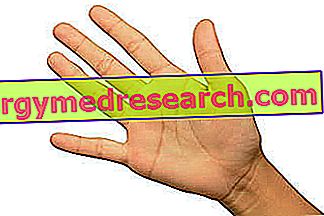
Scientific name
Ilex paraguariensis
Family
Aquifoliaceae
Origin
South America, Paraguay
Used Parts
Drug given by the leaves
Chemical constituents
- Chlorogenic acid derivatives;
- methylxanthines;
- Tannins;
- Essential oil;
- Flavonoids;
- Triterpenes.
Matè in Herbalist: Property of Matè
Maté is used mainly as a diuretic and at the same time as a source of caffeine; in fact, it constitutes the "national drink" in many South American countries.
Look at the recipe to prepare the maté at your home
Biological activity
Maté is a plant with tonic and stimulating properties, thanks to the chlorogenic acid and above all to the caffeine it contains. The latter molecule, in particular, exerts a stimulating action on the central nervous system through the antagonization of adenosine receptors.
These activities have been widely confirmed, so that the use of this plant has obtained official approval for the treatment of stress and physical and mental fatigue.
In addition, diuretic, inotropic and chronotropic positive and slimming properties are attributed to maté. All these activities are attributable to the caffeine content of the plant.
However, the slimming action of maté - although it is plausible, since caffeine is able to stimulate lipolysis and promote the release of fatty acids from their deposits towards the bloodstream - is not supported by adequate clinical studies conducted on the subject; therefore, it has not been officially confirmed.
Matè against fatigue and psychophysical stress
As mentioned, thanks to the tonic and stimulating activity that matè is able to exercise, the use of this plant is a valid remedy in cases where there is a lack of energy, fatigue and mental and physical stress.
Generally, about three grams of drug a day is recommended for treating the aforementioned disorders.
Matè in folk medicine and homeopathy
In folk medicine, maté is used as an internal remedy for rheumatism, neurasthenia, anemia, ulcers, depression and oliguria, as well as being used as a remedy to prevent the onset of fever and infections.
Externally, however, traditional medicine uses maté within cataplasms, which are used in case of ulcers and skin inflammation.
Furthermore, maté is also used in homeopathic medicine, where it can be found in the form of granules, oral drops and mother tincture.
In this context the plant is used in case of pain or heartburn, anorexia, drowsiness, physical and mental fatigue, stress, depression and obesity.
The amount of homeopathic remedy to be taken can vary from one individual to another, also depending on the type of disorder that needs to be treated and according to the type of preparation and homeopathic dilution that you want to use.
Contraindications
Avoid taking in case of hypersensitivity to one or more components.
Matè - Warnings
In some clinical studies the high consumption of maté was correlated with an increased risk of carcinoma of the esophagus.
Pharmacological Interactions
- I-MAO: hypertensive crisis;
- oral contraceptives, cimetidine, verapamil, disulfiram, fluconazole and quinolonics inhibit the metabolism of caffeine, with possible increase of its stimulating effects;
- thyroid hormones, adrenaline, ergot alkaloids, ephedra, synephrine: it enhances its effects;
- oral anticoagulants: reduces their activity;
- phenylpropanolamine: increased blood pressure;
- lithium: reduction of lithium levels in the blood;
- benzodiazepines: reduction of sedative effects;
- antiarrhythmics: increased caffeine plasma concentration;
- iron: it reduces its absorption;
- Aspirin: caffeine increases its bioavailability;
- phenytoin: increases the metabolism of caffeine;
- fluoroquinolones: increase the concentration of caffeine in the blood;
- ipriflavone: possible increase in the concentration of caffeine in the blood;
- enzyme inducers: reduction of caffeine in the blood;
- macrolides: increased caffeine in the blood;
- ticlopidine: increased caffeine in the blood.



